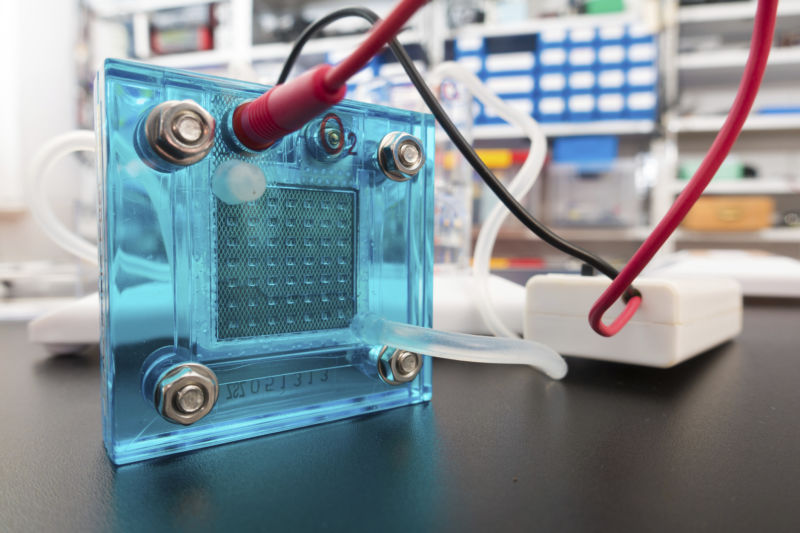New material for fuel cells allows you to create long-term "energy cells"

Lithium batteries are an excellent solution for storing the energy generated by solar panels or other sources of "green" electricity. But they are quickly discharged, so this is a short-term solution - to save energy "for the future" will not work. In addition, for storage of really large amounts of energy, very massive storage facilities are needed (one such built by Ilon Musk in Australia).
Experts have been searching for a suitable solution for many years, but so far, it has not been possible to create anything radical. However, recently fuel cells that produce energy from, for example, hydrogen are becoming more popular. The other day it became known about the new type of fuel cells, which work in two directions at once - they can generate electricity from methane or hydrogen, or consume energy and produce methane or hydrogen.
The efficiency of the cell is quite high: if you spend a certain amount of energy on the production of methane or hydrogen, and then start everything in the opposite direction, you can get 75% of the electricity previously spent. In principle, very good.
')
Restrictions
Batteries, as mentioned above, are not too good for long-term electricity supplies. Other disadvantages - slow recharging speed plus high cost. A good way out can serve as flow-through batteries, which are increasingly being used.

A flow-through (redox) battery is an electrical energy storage device that is a cross between a conventional battery and a fuel cell. A liquid electrolyte consisting of a solution of metal salts is pumped through the core, which consists of a positive and negative electrode separated by a membrane. The ion exchange arising between the cathode and the anode leads to the production of electricity.
But flowing batteries are not as effective as traditional batteries, and the electrolyte that they use is usually toxic or corrosive (and sometimes both).
An alternative that allows you to store energy for a long time is to turn excess electricity into fuel. But everything is not so simple, the usual schemes for converting energy into fuel are quite energy-consuming, so the efficiency of the system will never be high. In addition, the catalysts for the reaction are usually expensive.
The way to cut costs is to use a reversible (reversible) fuel cell. In principle, they are not new. When working in the forward direction, fuel cells take hydrogen or methane as fuel and generate electricity. Working in the opposite direction, they produce fuel by consuming electricity.
Just reversible fuel cells - ideal for long-term energy storage, as well as for the production of methane or hydrogen, where they are needed.
Why are they not yet used everywhere? Because in theory, everything looks great, but in practice there are insurmountable difficulties. First, many such elements need high temperature for work. Secondly, they produce a mixture of hydrogen and water, and not pure hydrogen (in most cases). Thirdly, the efficiency of the cycle is very small. Fourth, the catalyst in most of the existing elements is rapidly deteriorating.
Way out
He was proposed by researchers from the Colorado School of Mines. They studied the possibilities of reversible proton-ceramic electrochemical cells. They are very efficient in energy production, plus they do not need very high temperature - there are enough sources of waste heat from industrial processes or traditional electricity production.
Scientists improved the technology by proposing Ba / Ce / Zr / Y / Yb and Ba / Co / Zr / Y electrodes as a material. Their work requires a temperature of 500 degrees Celsius, which is not a problem, plus about 97% of the energy that was supplied to the system is involved in production. At the same time cells work on water or water and carbon dioxide. They produce hydrogen, in the first case, or methane, in the second.
The efficiency of the system is about 75%. Not as good as batteries, but for most purposes this is quite enough. In this case, the electrodes are not destroyed. After 1200 hours of testing, it turned out that the material was practically not degraded.
True, another problem remains - the high cost of the raw materials used to create the electrodes. The same ytterbium costs about $ 14,000 per kilogram, so making fuel cells that are really large in size can be quite expensive.
But, perhaps, developers will be able to solve this problem as well - in any case, work in this direction is already underway.


Source: https://habr.com/ru/post/444088/
All Articles